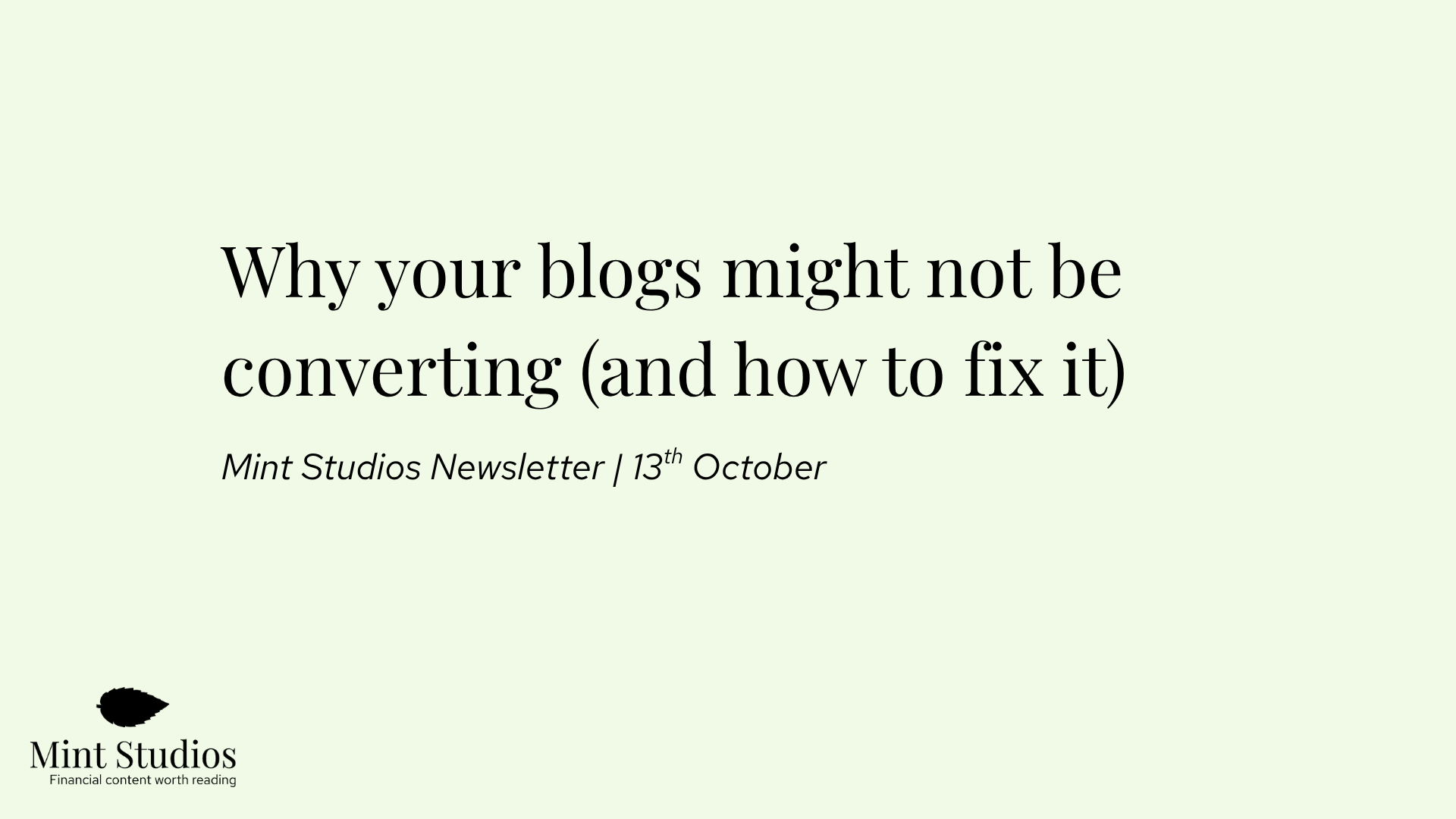There are a few common beliefs that people have about content marketing:
- It always takes a long time to get results
- There’s no point in doing it if you’re in an incredibly competitive space
- You can’t track leads or attribute leads to specific blog posts
In this article, we want to write about our work with a client that operated in a highly competitive space where we were able to generate results within the second month of working together — all while being able to attribute leads to specific articles that we created.
In this article, we’ll share our process for creating content for this client in a competitive space, how we were able to create content that focused on leads, not just traffic.
The situation: a product in a highly competitive space
In this case, the client that we’ll call “Paymentz” is a B2B fintech company that sells a finance product to other companies. Their product is not very high ticket, but still often requires multiple decision makers (although not always).
After a customer is onboarded, most of the product is self serve, although there are still account managers in place.
A few important things to mention about this client before we go forward:
- They already had a reasonably strong website Domain Authority when we started working together (the strength of the website, usually due to a high number of backlinks)
- They have salespeople and leaders willing to be interviewed for content purposes
- They have a relatively easy product to understand and strong value propositions
However, as we mentioned above, the product operates in an incredibly competitive market which can make it a lot harder to rank on Google, and therefore generate leads from content.
Our process: how we used Pain Point SEO to generate leads within month 2
When we started working with Paymentz, we knew from the get-go that we were in a very competitive space. In order to reach our target audience we’d have to focus on the product’s competitive advantage.
Our strategy was to target pain points and use cases with Bottom of the Funnel content, while focusing on our competitive advantage vis a vis competitors.
Here’s the process we went through:
1. Understanding pain points and use cases
The first step was understanding Paymentz’ target market’s pain points. We did this by sitting down with the CEO/manager, sales team and product people.
We were also set up with the product so we could use it ourselves, which made it a lot easier to understand how it worked, take screenshots, etc.
Based on those conversations, we then outlined the pain points, use cases and classic BOFU keywords to help us understand: what is our target market searching for online and what are their pain points that would make them look for our solution?
You can read more about BOFU and our research approach here:
2. A strategy that focused on our competitive advantage
Once we had a good understanding of the product, the market and customer pain points, we set about testing a few theories on what would and wouldn’t work content wise. There are a few types of content we wanted to create to see how each would do:
- A few articles based on interviews with external experts/influencers
- A “founding story” article based on the story of the company’s history
- A few keyword focused articles on the product’s competitive advantage
- A few keyword focused articles on customer pain points
The keywords we were targeting were incredibly specific to our target market’s use case and pain points. Although they didn’t have as many searches per month, it didn’t matter because we were focusing on leads and customers, not just traffic.
3. Content based on interviews with salespeople
Because our content is based on interviews with the salespeople and experts, we were able to write unique content that highlighted and talked about the product naturally.
In this particular niche, all competitors created high quality content — which meant it was even more important to create unique content that was closely related to the product. We wanted to show the reader that we understood the product very well, while also explaining how it would fit in to their specific needs.
With this approach, we could:
- Add screenshots of the product where necessary
- Describe in detail why the product would work well for a specific kind of person
- Add direct quotes from senior leadership within the company
- Add examples from real use cases
Our articles were more detailed, more in-depth and very focused on pain points – which allowed us to target the right people who were ready to sign up to our solution.
This is different to common content marketing approaches that instead cast a wide net with Top of the Funnel content: sure you’ll get a lot of different people reading your content, but will your target market be reading it?
4. Being able to track leads and attribute them to the right articles
We set up the analytics on Paymentz’ so we could easily monitor how our content was doing.
We agreed that a lead was someone completing a multi-step form – so not a newsletter subscriber or a PDF download. This meant that someone completing the form would be definitely showing buyer intent.
We used a combination of Google Tag Manager and Google Analytics to track the form submission, and would turn to the Model Comparison Tool to track which blog articles were generating leads.
You can read more about how we set this up in this article:
5. The result: leads from month 2
Even though we’re in a competitive space, we were still able to rank for specific keywords by creating content that focused on customer pain points, specific use cases and was based on interviews with internal experts.
Within month 2, the leads were coming through, as you can see in this screenshot:

We could also tell which leads were coming from which articles. Of all the hypotheses mentioned above, the articles that performed best in month 2 were the founding story, pain point SEO and one use case.
As you can see, within month 2 we’d already brought in 7 leads (the rest are articles that already pre-existed on the site).
If you’re targeting customers that are worth £50,000, then 7 leads in a month is a very good place to start.
An interesting result was the high number of leads that came from the “founding story” article.
This tells us a few things:
- Founder story articles are great to promote on social media since people love reading about the "why" of a company. That’s likely to be how a couple of the leads found the article.
- Some leads came through organically. This likely means they entered through the homepage, clicked through the blog, and reached the article there. It shows you that some people will go through your blog.
At Mint, we love doing founder stories because they serve multiple purposes:
- Align writers, the team, and the client on the value props of the company
- Clearly explain to potential customers and anyone reading why the company was set up and what the main value props are
- Acquire customers who believe in the why
This is a good example of a type of article that isn't SEO driven, and still drives leads (and also shows the benefits of tracking leads in the first place!)
Here are some examples of founder story-type articles we've written at Mint Studios:
- Why I Set Out to Build a Fintech Content Marketing Agency
- The Banking World for Freelancers was Broken. Here's How We're Fixing it With Parpera
Our work with Paymentz is a good example of a situation that debunks the common beliefs mentioned at the beginning of the piece: with our methodology, we were able to generate results for Paymentz within month 2 and correctly attribute the leads to the content we produced, even while they were in a competitive space.
Curious to hear if this approach would work for your company?
Book a free 30 min consultation with our Director of Content, Araminta, to see if it would work for you!











